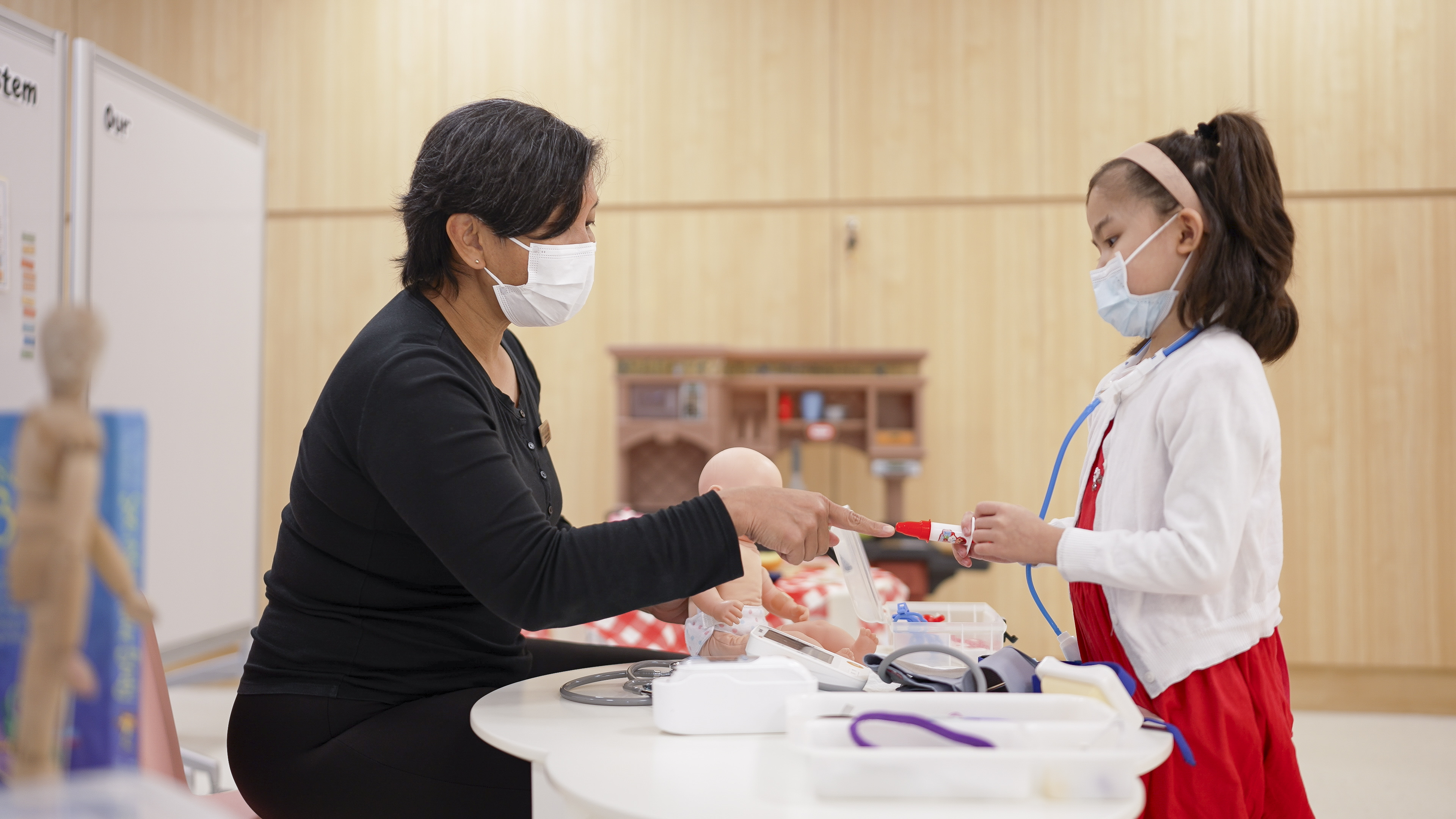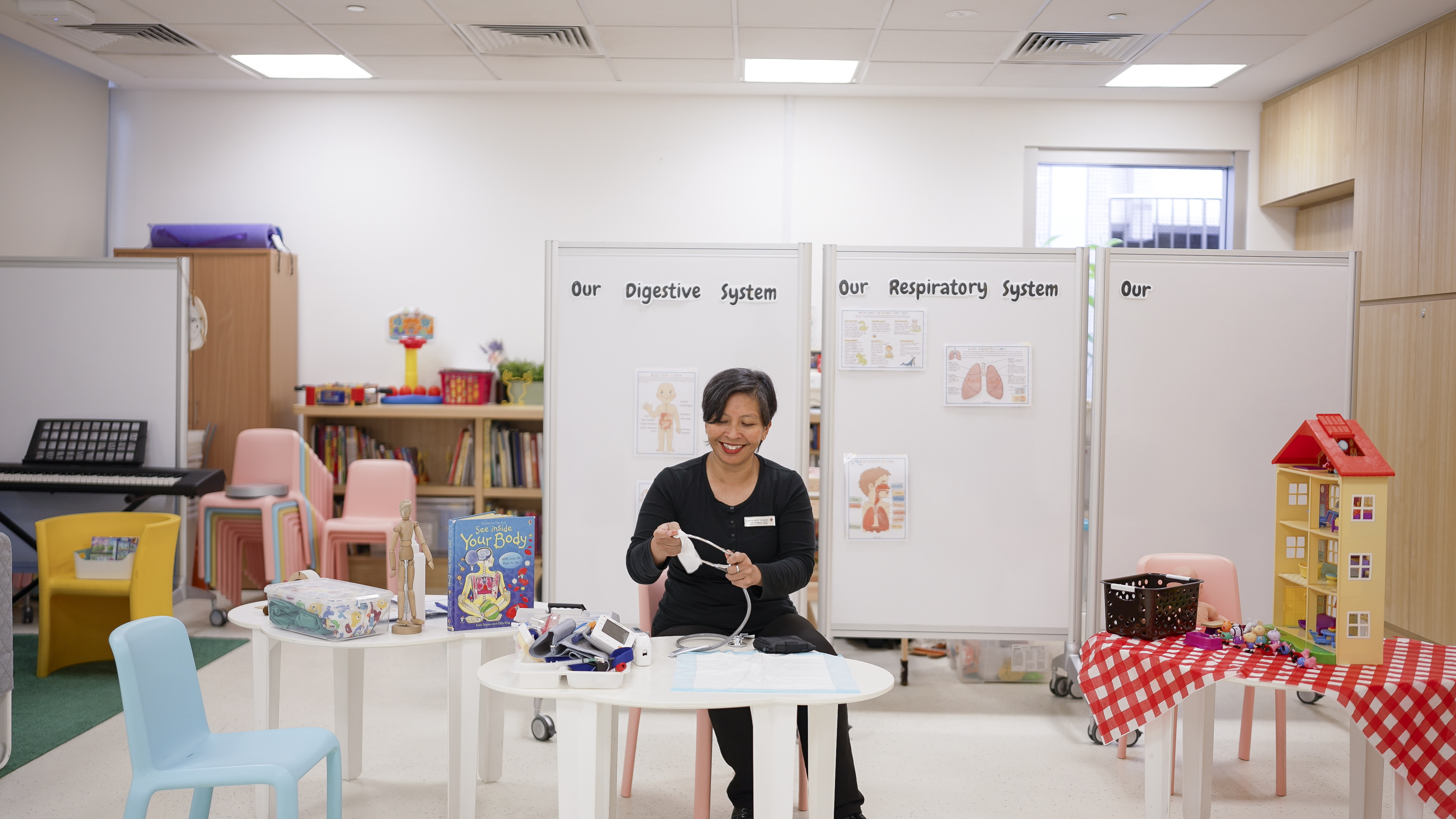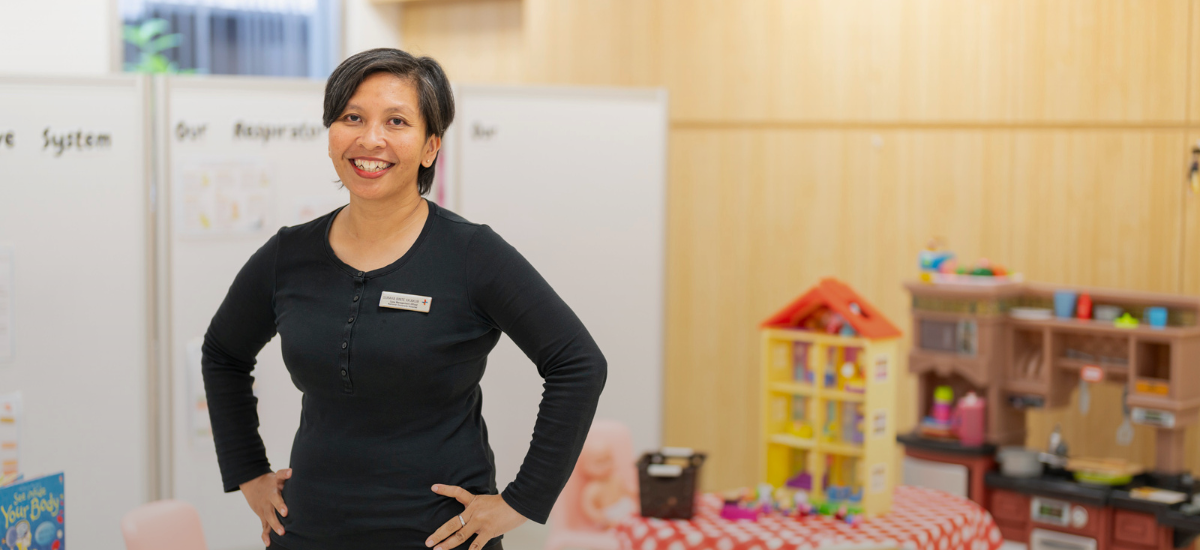Published on 28 October 2023
A therapist shares how she helps to reduce young patients’ trauma and stress.
Playing can help save lives by improving healthcare outcomes, or at least, make life easier.
Ms Suraya Ya'akub should know, as play is integral to her role as a Child Life Therapist at the National University Hospital (NUH).
One of only 10 child life therapists in Singapore, Ms Suraya relies on play to build rapport and trust with young patients, to help them cope with challenging — and sometimes, scary — medical conditions and treatments. “While playing, the patients will share with me things like how they cope with hospitalisation, their diagnosis, treatment and procedures they have to go through. Play is a very important part of my job — and of course, the most enjoyable,” Ms Suraya said.
NUH’s Child Life Service sits within the hospital’s Division of Paediatric Psychological Services at the Khoo Teck Puat - National University Children's Medical Institute (KTP-NUCMI), which encompasses other professionals such as psychologists, and art and play therapists. NUH’s child life therapists’ responsibilities include preparing and supporting children for procedures or surgeries, educating children and their families on a new diagnosis, and emotionally supporting the siblings of children who are ill.
Creating a safe environment
While Ms Suraya sees patients from infants to young adults — those aged 18 to 21, who are preparing to transit to adult clinics — the majority of her charges are between two and 12 years old. She prepares them — and in many cases, their caregivers — for comparatively simple procedures such as blood-taking to more complicated treatments such as major surgery or transplants.
Through role-playing, sharing social stories using photographs and descriptive words and other forms of therapeutic play to guide children through real-life situations, Ms Suraya engages her patients, talks them through the procedures and addresses any fears they may have. Together, they may work on a plan to cope with the challenges ahead. Overall, the aim is to reduce any trauma or stress associated with healthcare procedures.

“While playing, I am actually trying to understand and build a relationship with the patients and caregivers. We want to understand them at the level that they are at,” she explained. “With a strong therapeutic relationship with the patients, I could be seen as a ‘magician’ of sorts,” she added. And her ‘act’ involves helping a child to stop being fretful when the doctors come and examine them, as well as enabling them to be compliant when consuming their medicine orally. She also empathises with a child when they are scared, and helps them to express their emotions in an appropriate way.
Empathy is key
Ms Suraya is intrinsically motivated by her personal experience as a caregiver to a teenage son who was diagnosed with an autoimmune disease when he was young. “I felt very emotional at that time because I thought I was alone and was very scared,” she recalled. “I felt I wasn’t being supported and that no one understood where I was coming from. I really hated those feelings.”
Thus, she is able to relate to the caregivers of her young patients. “I understand their fears. I understand their emotions when they are being told that their son or daughter has a chronic disease or even, an acute condition,” Ms Suraya said. “I don't wish for any parent to feel that way. Being a child life therapist, I'm able to support them and their children,” she added.
An inter-disciplinary approach to childcare
Besides directly helping patients and their families, Ms Suraya said that working seamlessly together with other medical colleagues is crucial for a young patient’s well-being.
“It isn’t just my input that’s important in a patient’s care plan — those from the medical team, social worker and even, sometimes, the ward or room cleaner, matter too!” said Ms Suraya. “The cleaning assistant may have built rapport with the caregivers and the patients in a different way, and that perspective can be valuable,” she explained.

She believes that child life therapists can be the friendly face of the hospital’s paediatric unit, a place that can be associated with both hope and fear. “No one should feel lost while trying to understand or cope with their diagnosis and treatments,” she said.
“I see the children beyond their conditions, or the dialysis machine that they may be attached to, and I see them beyond the scars that they may have. I see them for who they are and what they can do,” she mused.
Ms Suraya encourages parents to enquire about the child life services provided. “Child life therapist is a patient’s advocate… your child's advocate. So, do seek out our services for support,” she concluded.
Find out more about how NUH's Child Life Service can help to improve your little one’s healthcare experience here.
In consultation with Ms Suraya Ya'akub, Child Life Therapist, KTP-NUCMI, NUH

